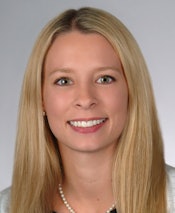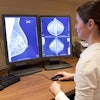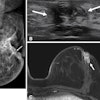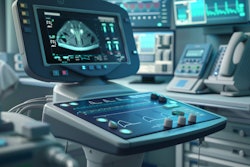
Are mobile units as effective as stationary sites in ensuring that women have access to breast screening? They're a move in the right direction, but more work needs to be done to better assist women who make use of mobile mammography, according to a study published online September 5 in the American Journal of Roentgenology.
The use of mobile mammography screening units has increased as facilities try to address issues that prevent underserved women from getting screened, such as transportation, access, and cost barriers, wrote a team led by Dr. Madelene Lewis of the Medical University of South Carolina in Charleston. Lewis' group found that its mobile program was only somewhat successful in addressing those issues.
"In addition to breast cancer healthcare disparities that we already know exist, we found significant differences in patient characteristics and behaviors between patients using our cancer center versus our mobile mammography unit," Lewis and colleagues wrote. "By identifying these determinant characteristics, specific educational programs and targeted interventions can be developed to increase mammography screening rates among underserved populations."
Screening disparities
Despite screening mammography's benefits, disparities in screening exist among women of different races, socioeconomic status, geographic locations, and ages. The 2010 Affordable Care Act (ACA) tackled the issue head on, emphasizing the need to address these differences -- and prompting the researchers to evaluate their mobile breast cancer screening program, Lewis told AuntMinnie.com.
 Dr. Madelene Lewis of the Medical University of South Carolina.
Dr. Madelene Lewis of the Medical University of South Carolina."South Carolina is a state that did not choose to expand its Medicare program, so we wanted to see how effective our mobile mammography unit was in reaching underserved patients," she said.
The Medical University of South Carolina uses a 40-ft van to provide breast cancer screening, prevention education, and health counseling for women who have difficulty accessing healthcare and/or are at risk of breast cancer. The university advertises the service as part of its regular breast imaging marketing campaign via billboards and TV and radio spots. More than 2,000 free or low-cost mammography screening exams are conducted in the van each year, with service offered four days per week in Charleston and eight neighboring counties, Lewis and colleagues wrote.
The mobile unit's staff includes a patient navigator who offers education about the benefits of screening and follows up regarding any additional imaging needed. The patient navigator role is crucial for making mobile mammography a success among women who are vulnerable to being lost to follow-up.
"One of the things we found is that the women who visited the mobile van tend not to adhere to screening guidelines," Lewis said. "They've gotten their baseline exam later, after 40, and haven't come in for routine mammography every year, but perhaps every third or fifth. Our patient navigator explains the guidelines to them and why it's important to come back."
The study included 1,433 screening mammography exams performed in a mobile unit in 2014, and 1,434 exams performed at the university's cancer center during the same year. For each exam, Lewis' team recorded associations between the two locations and characteristics such as health insurance, race, marital status, geographic area, adherence to screening guidelines, and recall rates.
The researchers found that patients who visited the stationary unit at the cancer center were older than those who visited the mobile unit, with a mean age of 57 years versus 52 years. There was also a significant link between location and health insurance status, with more uninsured patients using the mobile van, and a link between location and factors such as race, marital status, and geographic area. All of the findings were statistically significant.
| Demographic differences between women screened at cancer center vs. mobile unit | ||
| Cancer center | Mobile unit | |
| Age | ||
| 41-50 | 23% | 38% |
| 51-60 | 34% | 39% |
| 61-70 | 27% | 16% |
| Health insurance | ||
| Yes | 69% | 54% |
| Medicare or Medicaid | 28% | 7% |
| No | 4% | 39% |
| Race | ||
| Black | 49% | 54% |
| Hispanic | 1% | 7% |
| White | 47% | 33% |
| Marital status | ||
| Divorced | 17% | 15% |
| Married | 49% | 38% |
| Single | 25% | 34% |
| Widowed | 8% | 4% |
| Geographic area | ||
| Urban | 80% | 71% |
| Rural | 20% | 29% |
| Adherence to screening guidelines (screening beginning at age 40) | ||
| Yes | 57% | 34% |
| No | 35% | 43% |
| Recall rate | ||
| Positive | 13% | 16% |
| Negative | 87% | 84% |
Was the mobile service successful in bringing breast screening to underserved women? Only partly, Lewis and colleagues found. Overall, the study's mobile screening patient population had a higher adherence to follow-up recommendations than what has been reported in comparable studies, which the team attributed to the program's patient navigator.
"The mobile screening population is a vulnerable group that could easily be lost to follow-up, so the role of a patient navigator is crucial to ensuring these patients can overcome barriers to have timely evaluation of their imaging abnormalities," the researchers wrote.
But follow-up remains a problem. The mobile unit's recall rate was higher than that of the stationary screening center. And for a population that may not comply with recommendations for follow-up imaging because of time, cost, or access issues, the fact that follow-up must be conducted at the cancer center could be a deal-breaker, Lewis and colleagues found.
"Patients using the mobile mammography unit exhibit a higher recall rate, which may align with the overall patient population's lack of adherence to screening mammography guidelines and lack of prior mammography examinations for comparison," they wrote. "Additionally, the significantly lower adherence to recall recommendations in patients using the mammography unit may be because of difficulties in access to the breast imaging center because patients must go to the cancer center for follow-up."
Finally, the researchers also found that rural women -- who often need more support for breast cancer screening adherence -- are not being served as well as they could be.
"Both the mobile unit and cancer center screening populations were from predominately urban patient populations, which provides an opportunity for the mobile health unit to re-examine where it goes in surrounding counties to further expand its outreach to rural areas."
One size doesn't fit all
To develop an effective breast cancer screening program, it's important to realize that different women need different services, Lewis said.
"One size doesn't fit all," she said. "Some patients aren't going to go above and beyond to schedule follow-up appointments, so making it as easy and convenient as possible for them to do that is important to having a successful screening program."
The researchers hope that their study encourages other cancer facilities to develop mobile screening programs, according to Lewis.
"A mobile program can be expensive to run, but the benefit of catching more cancers early among women at risk makes it worthwhile," she said.




















